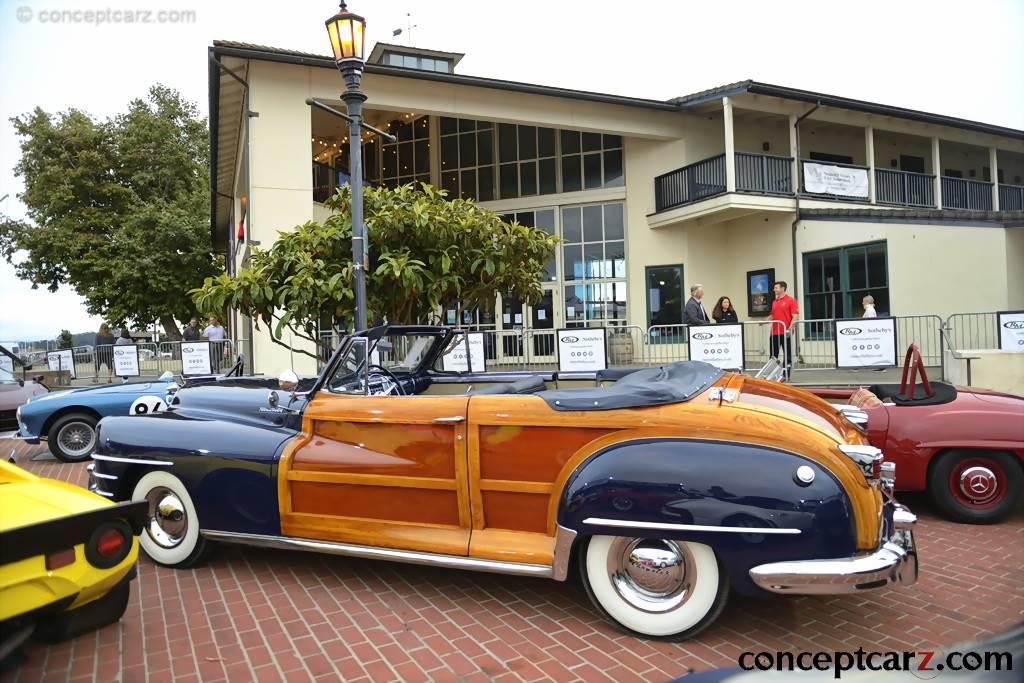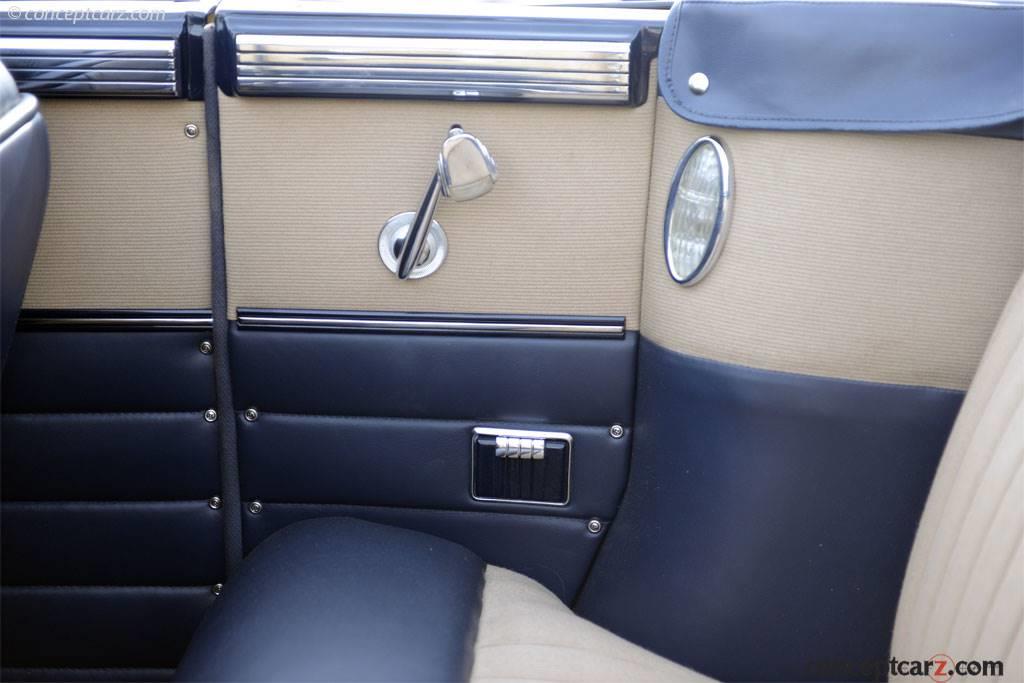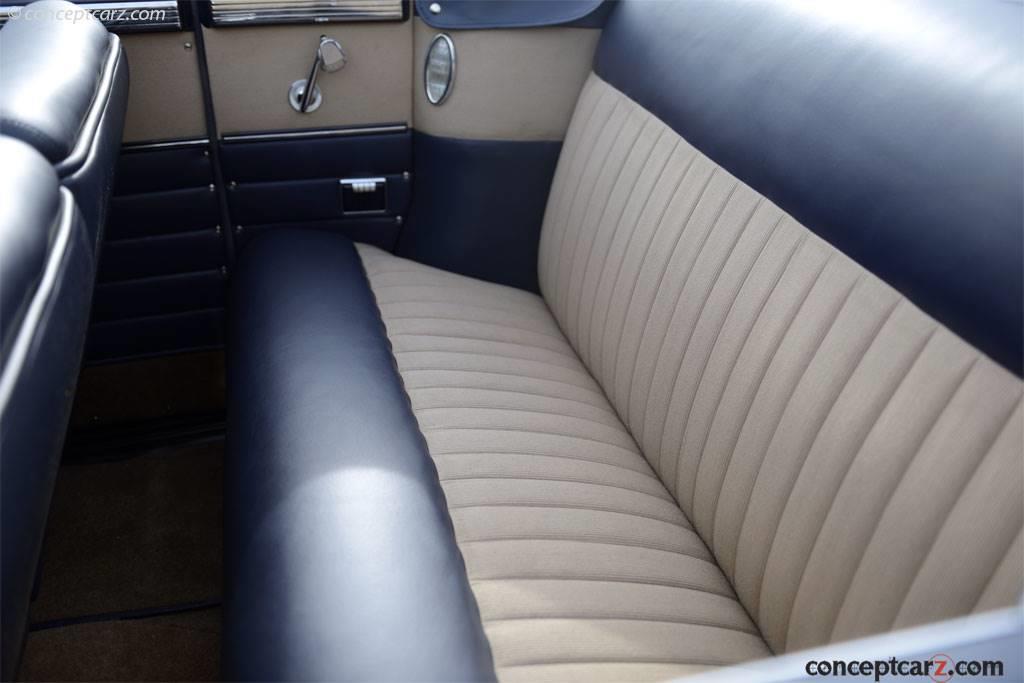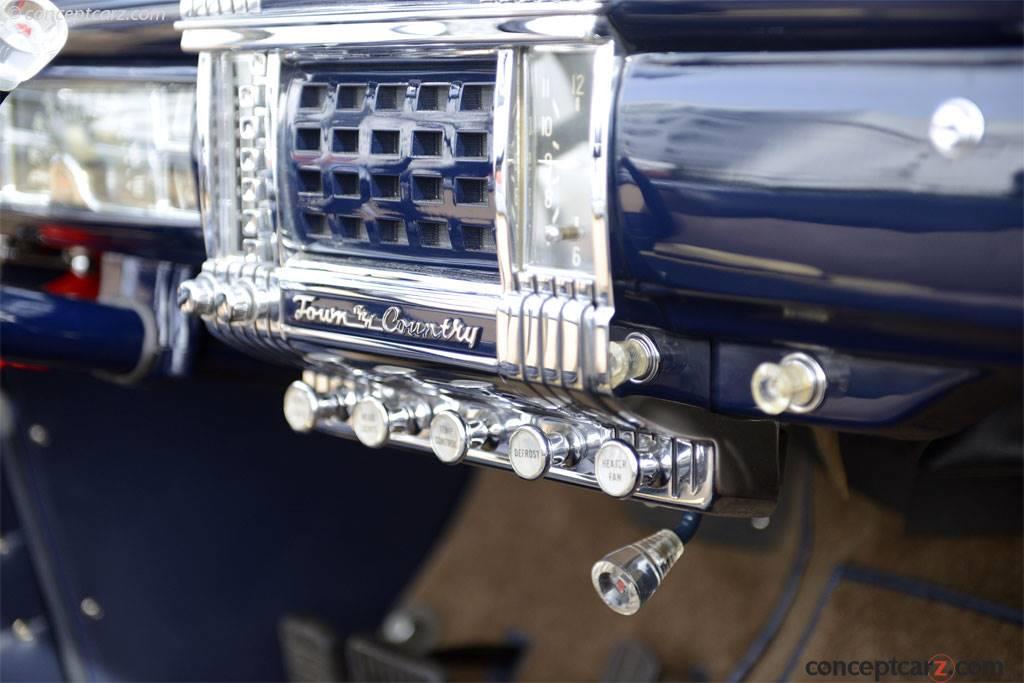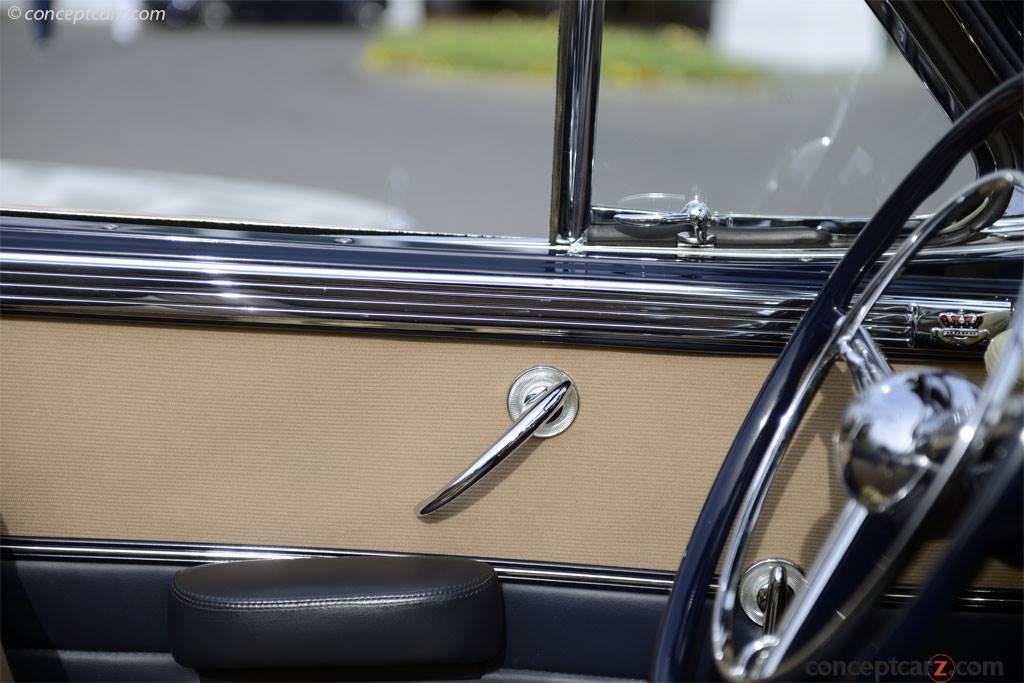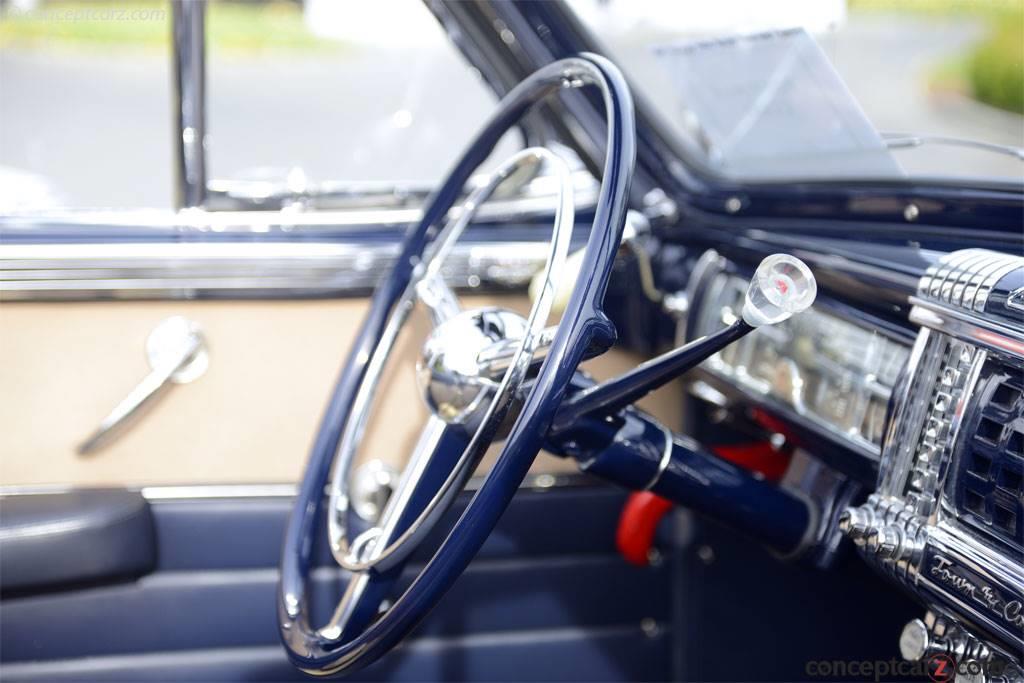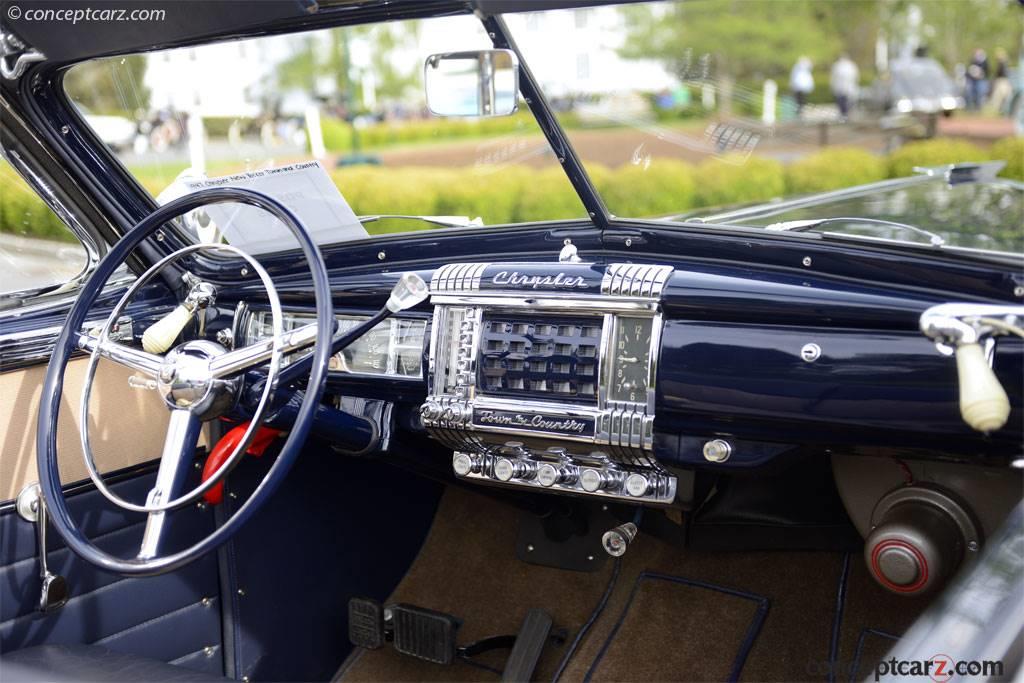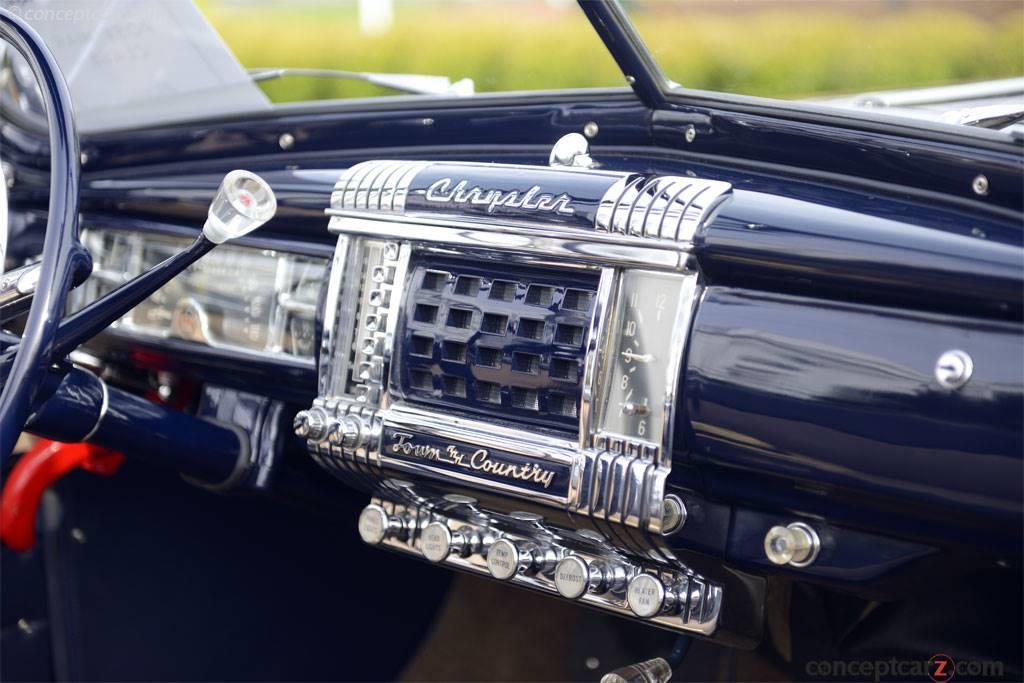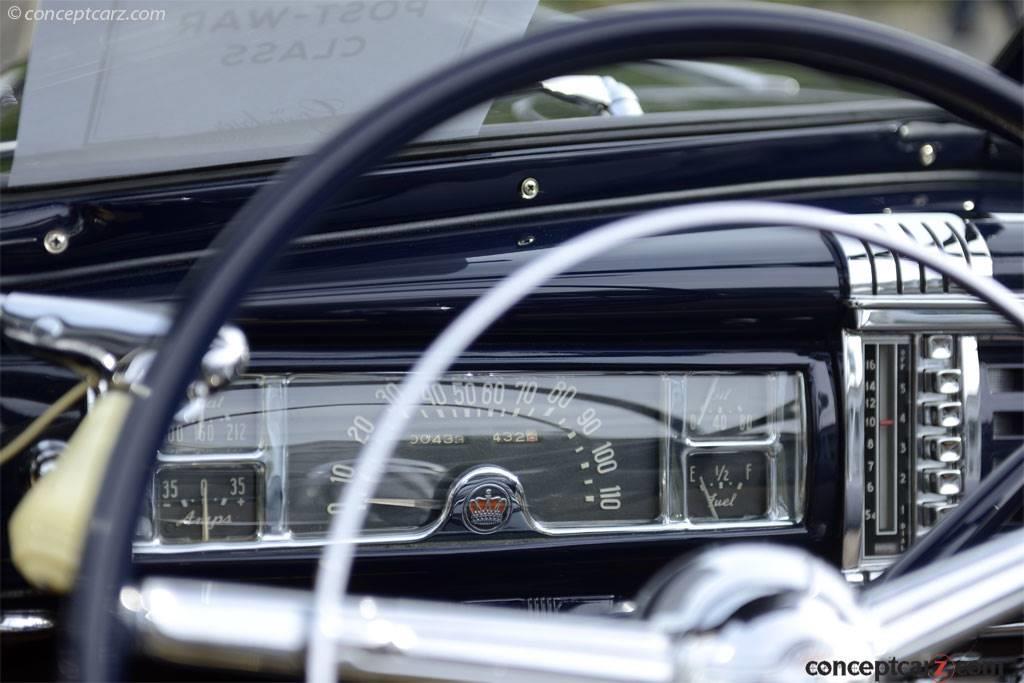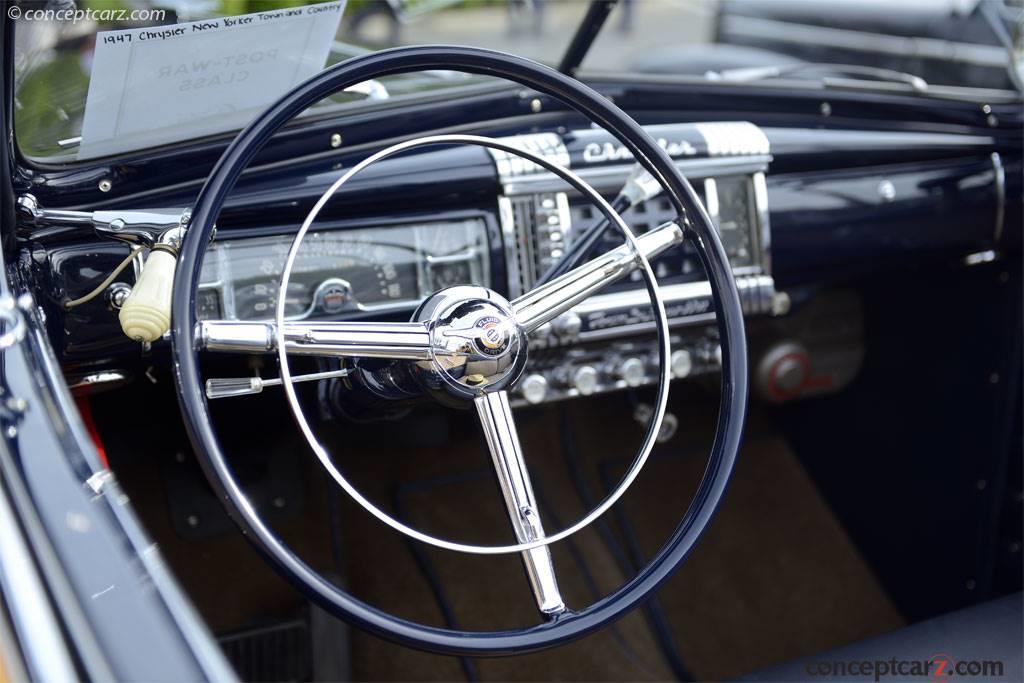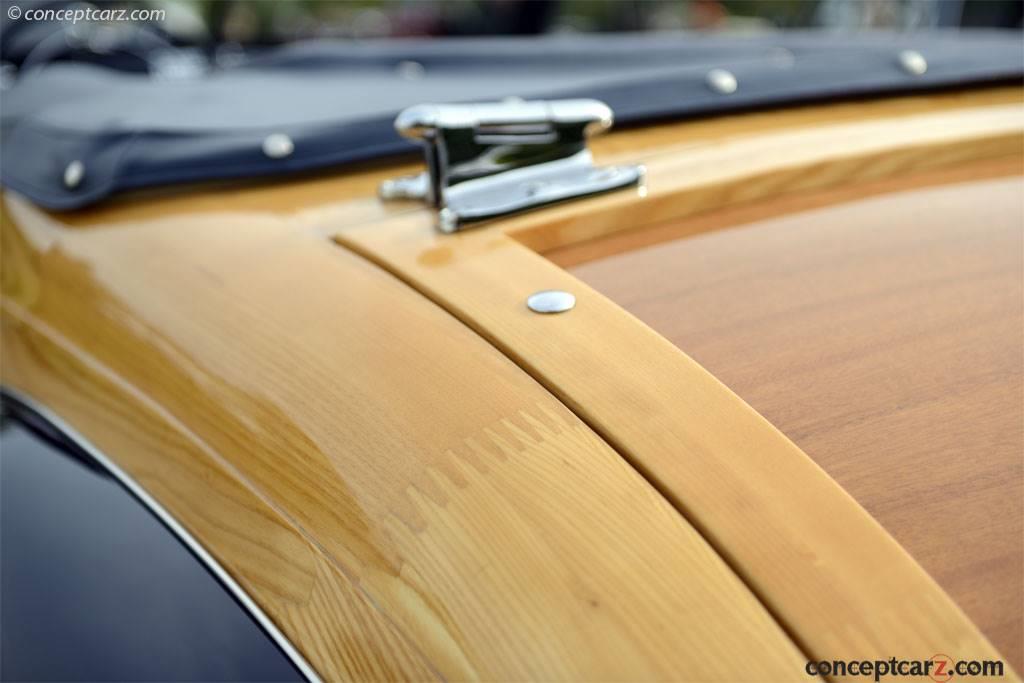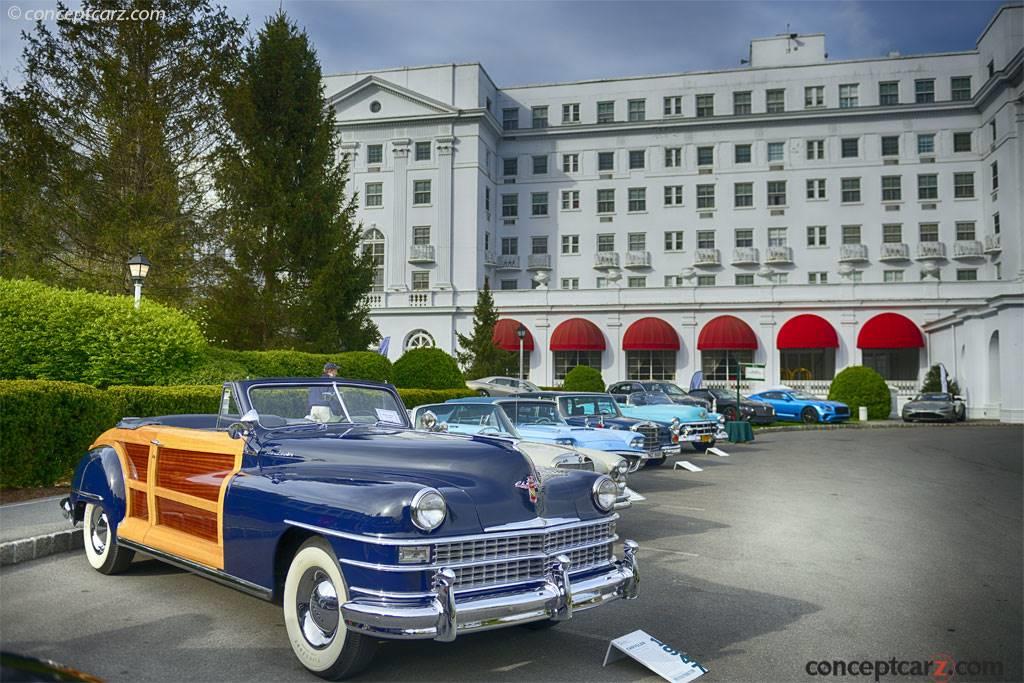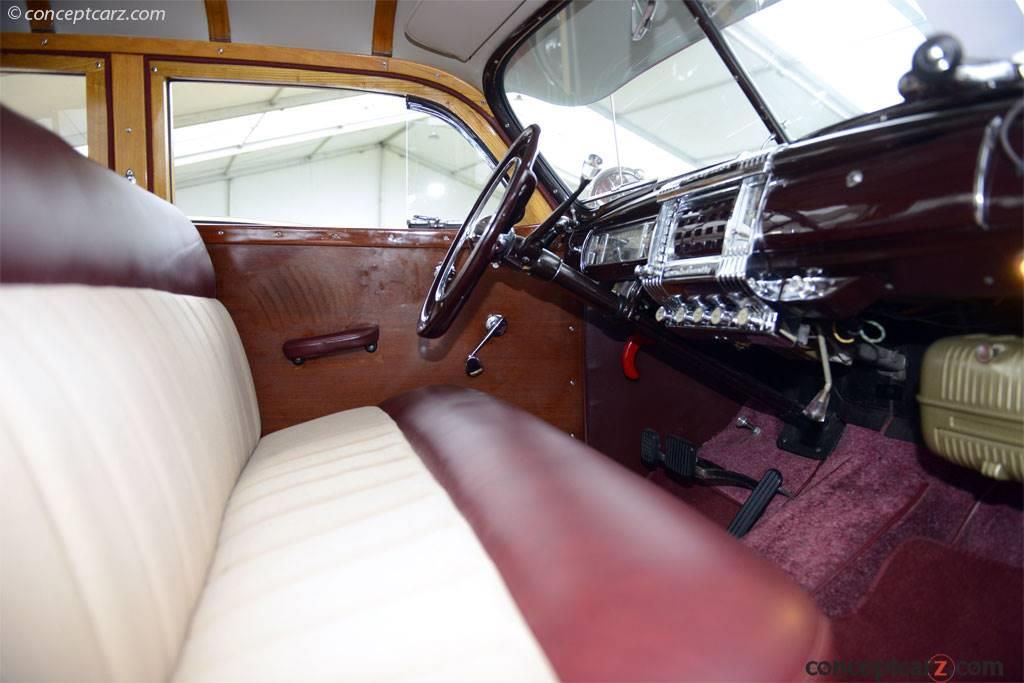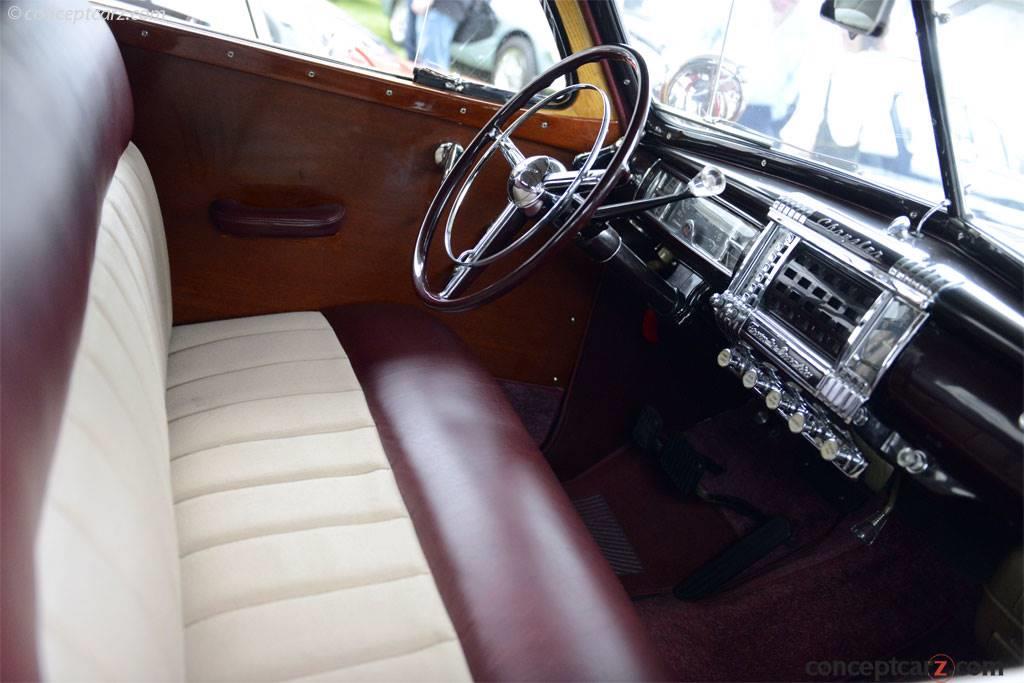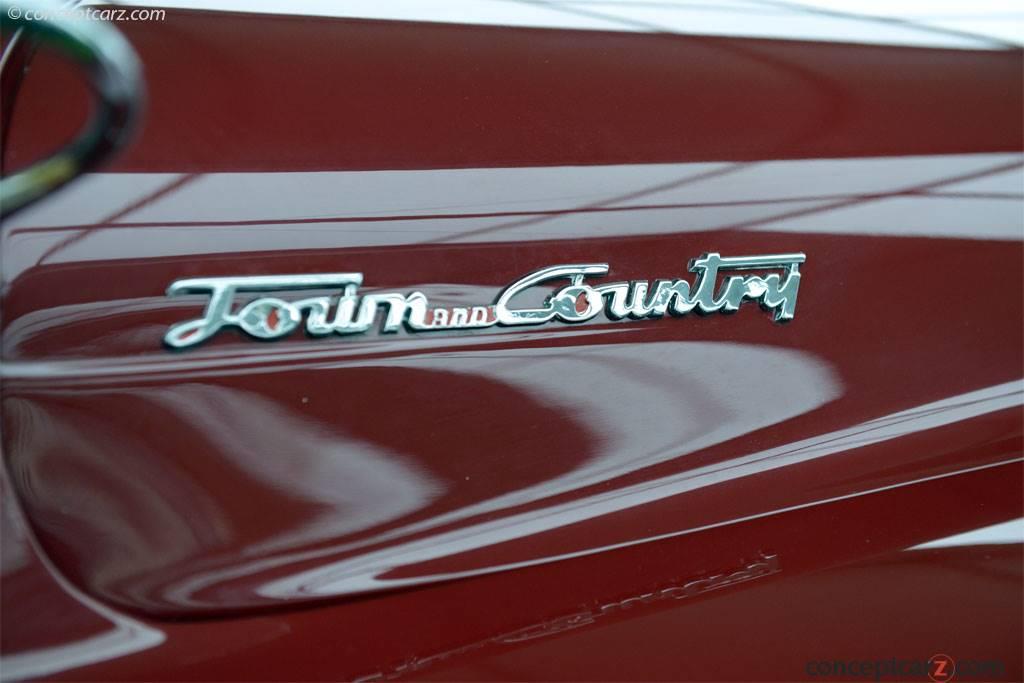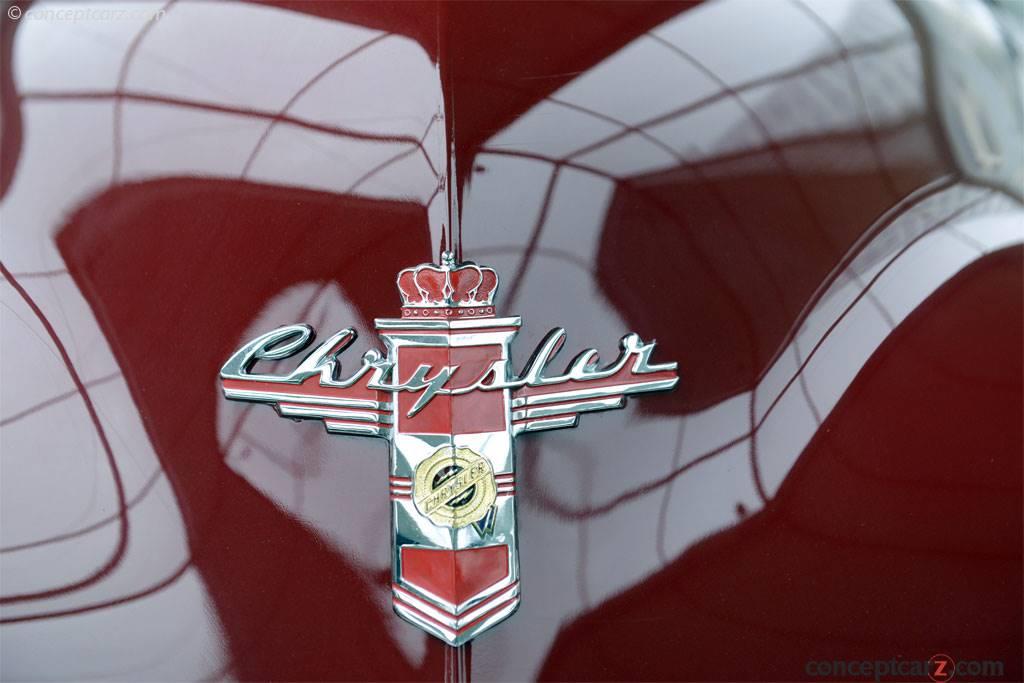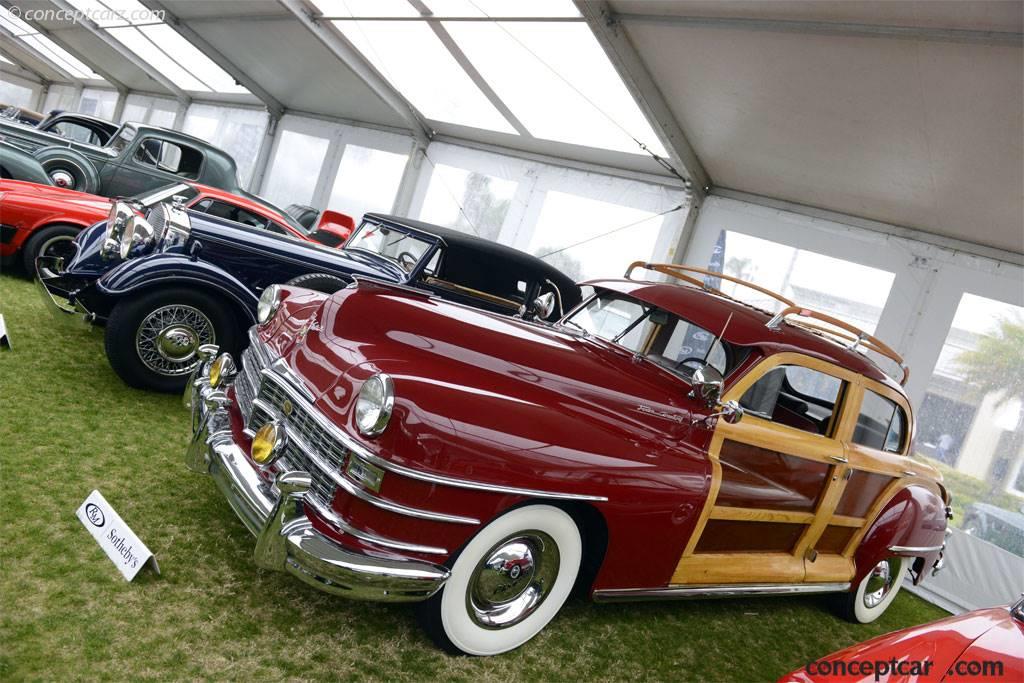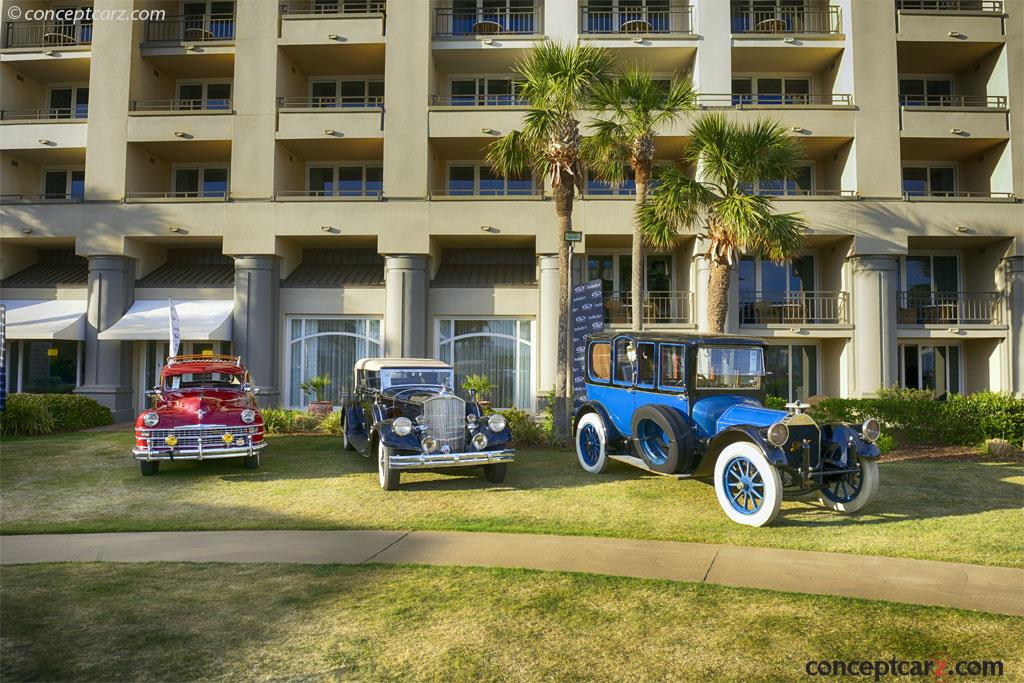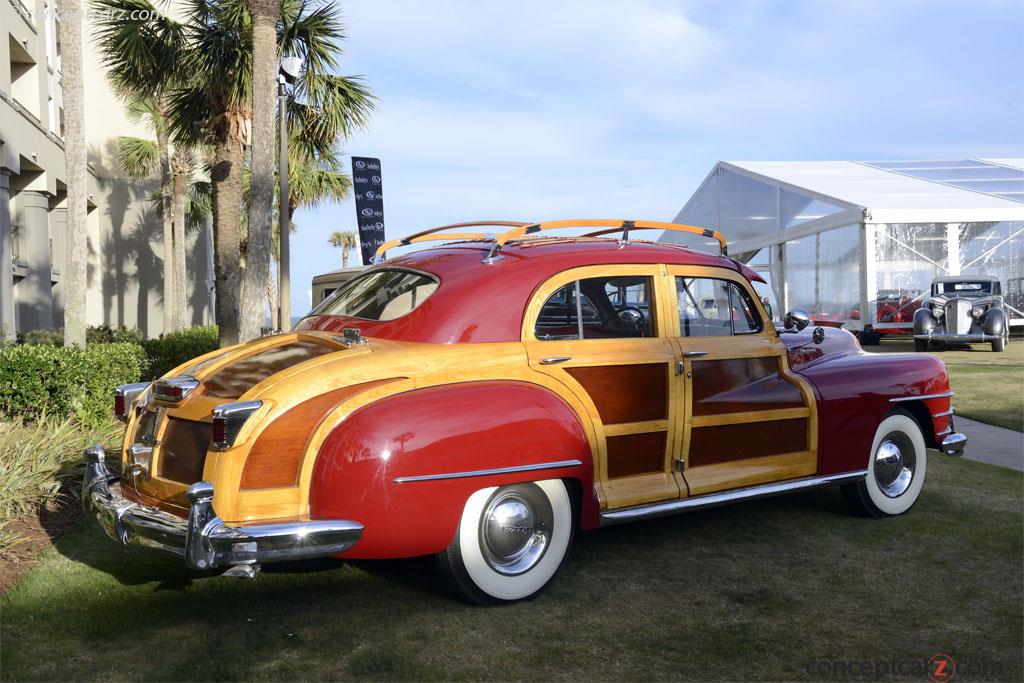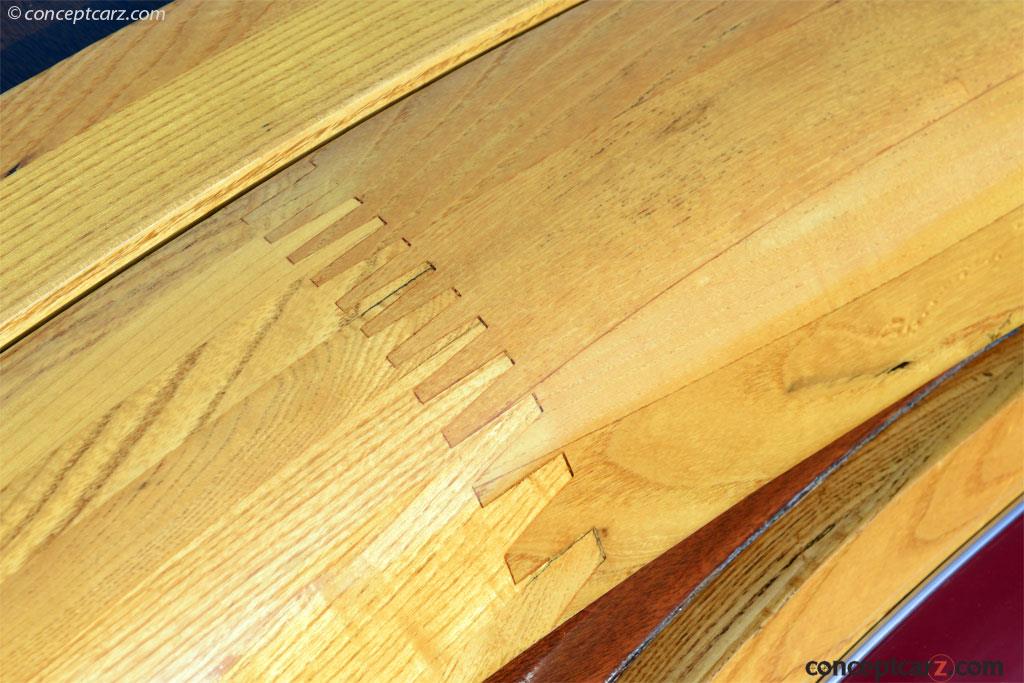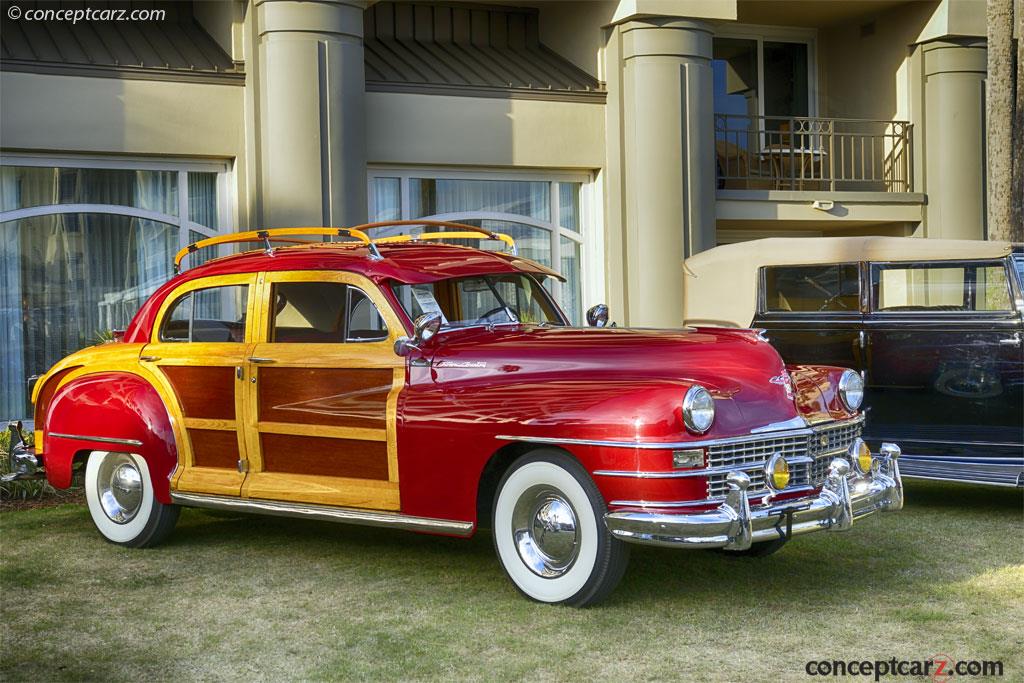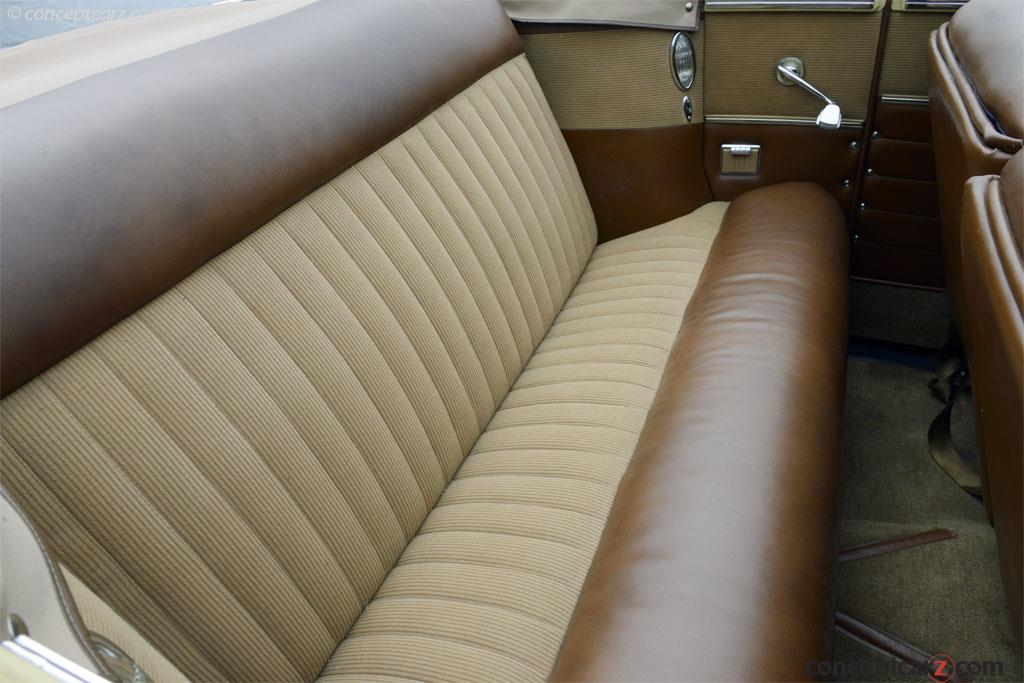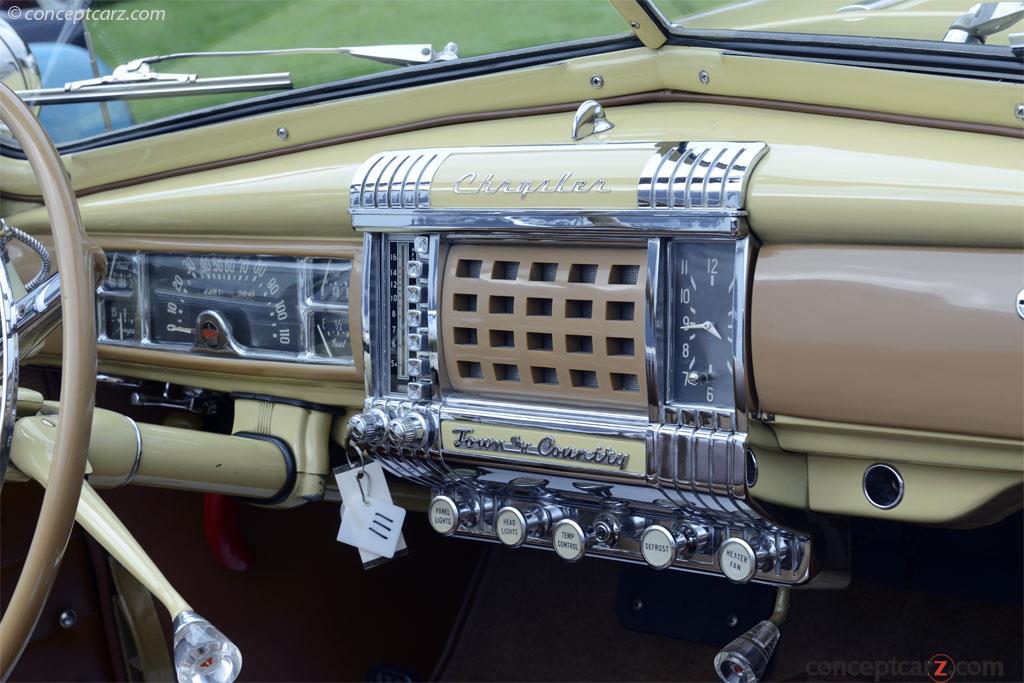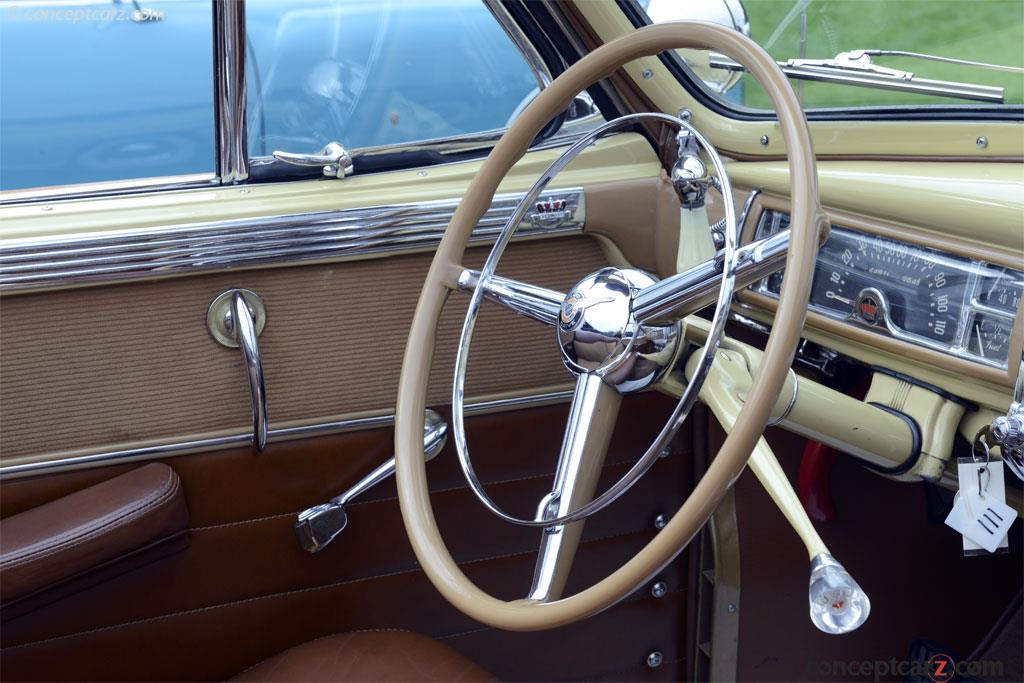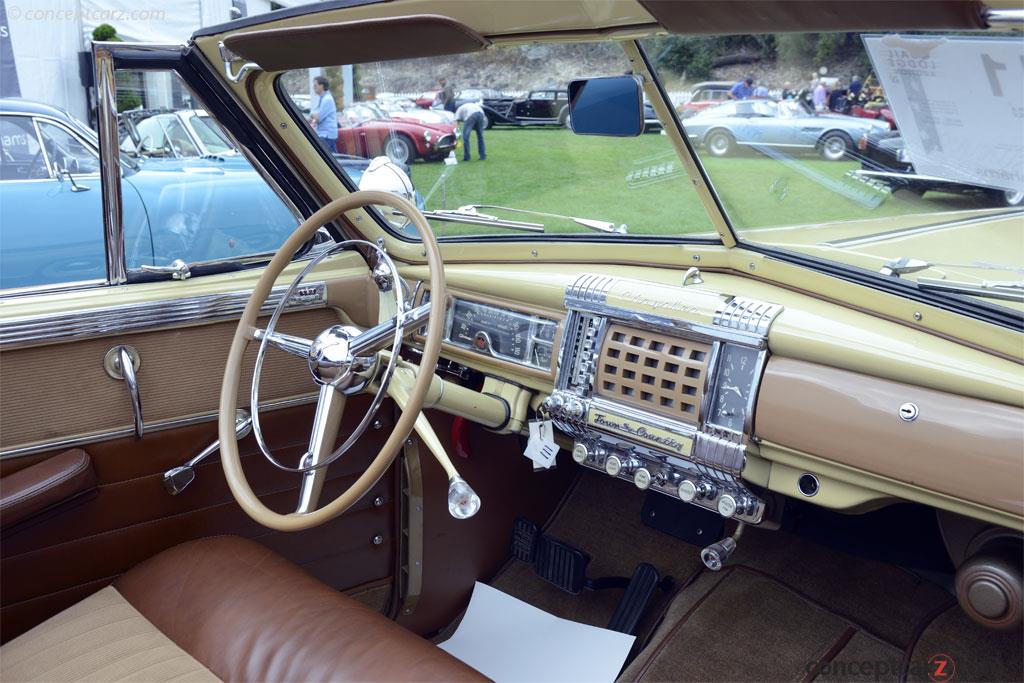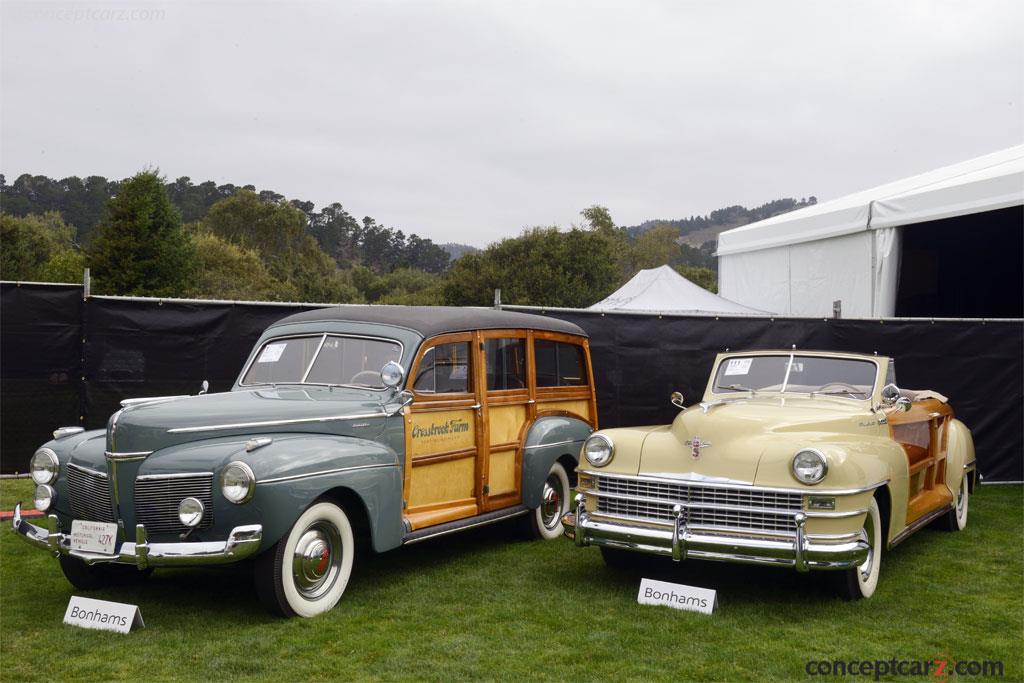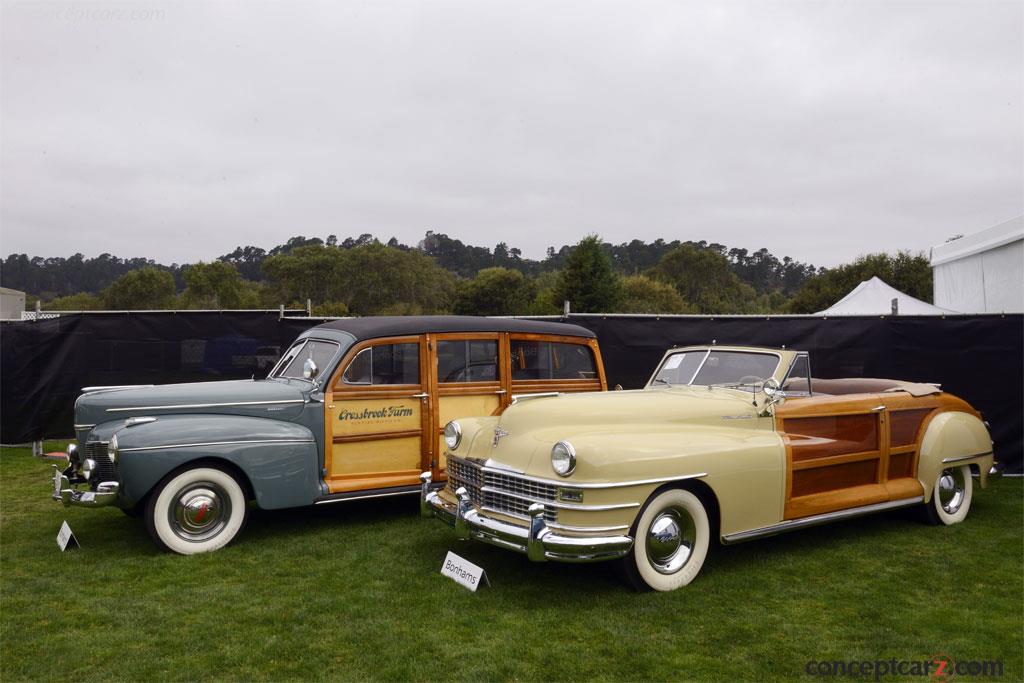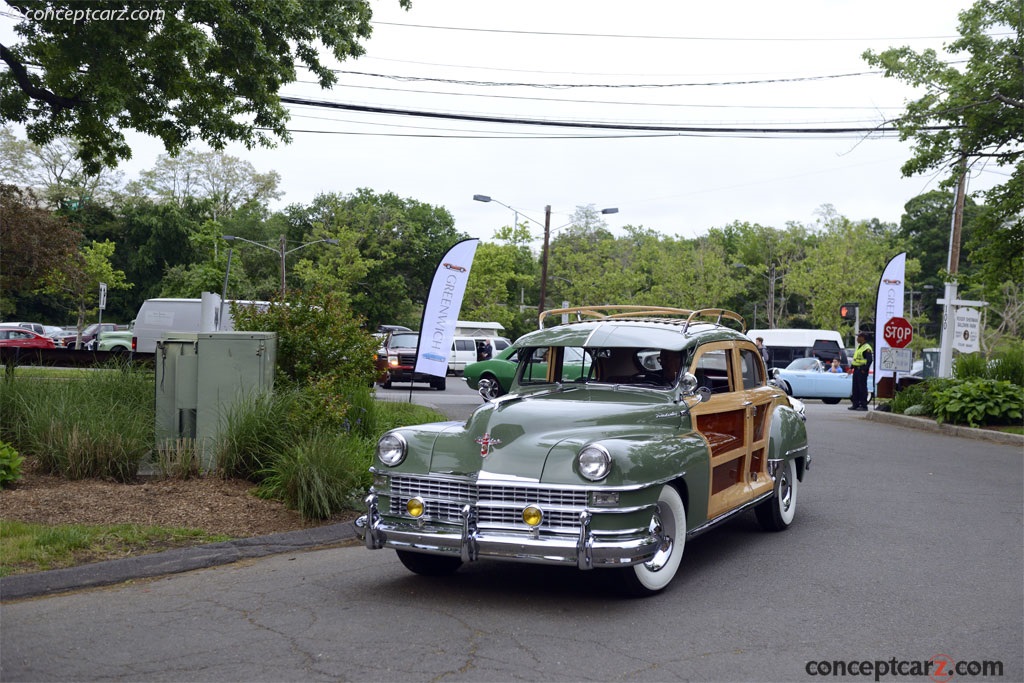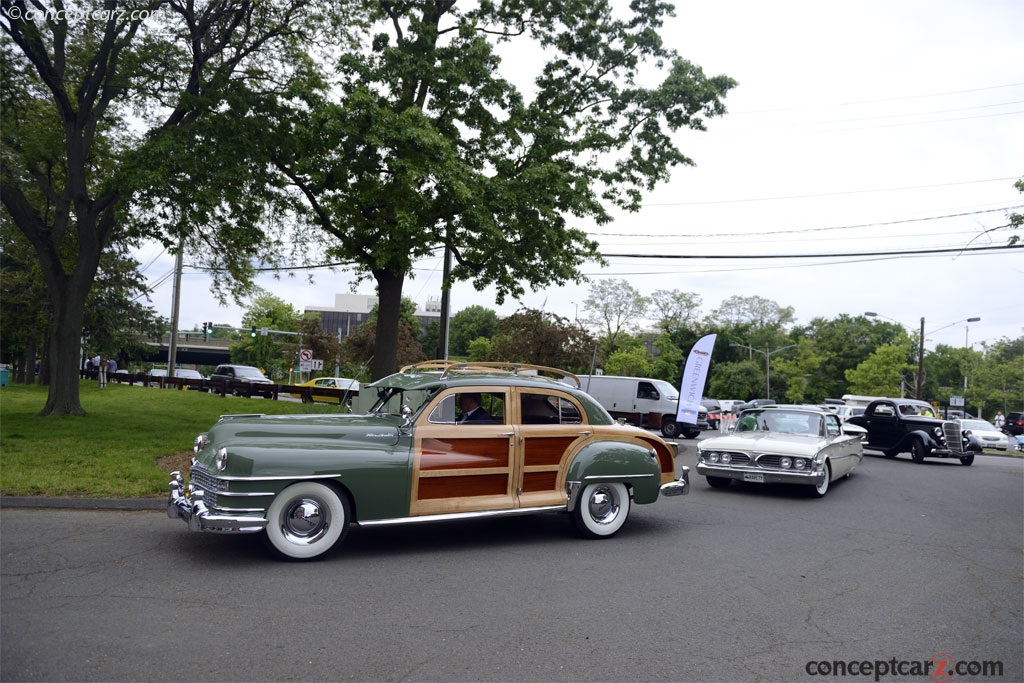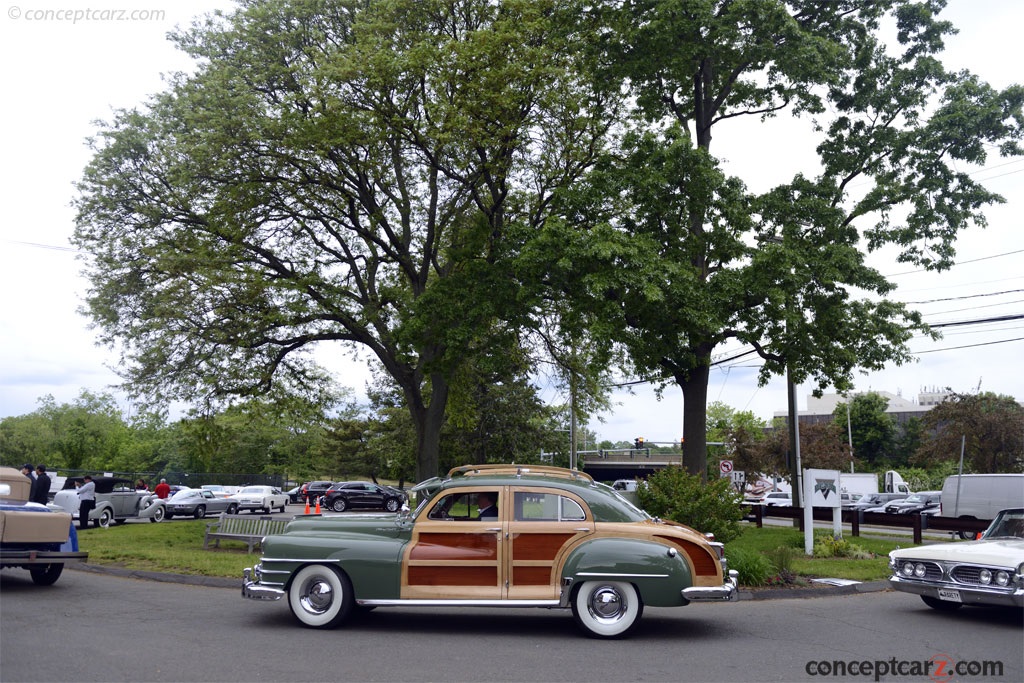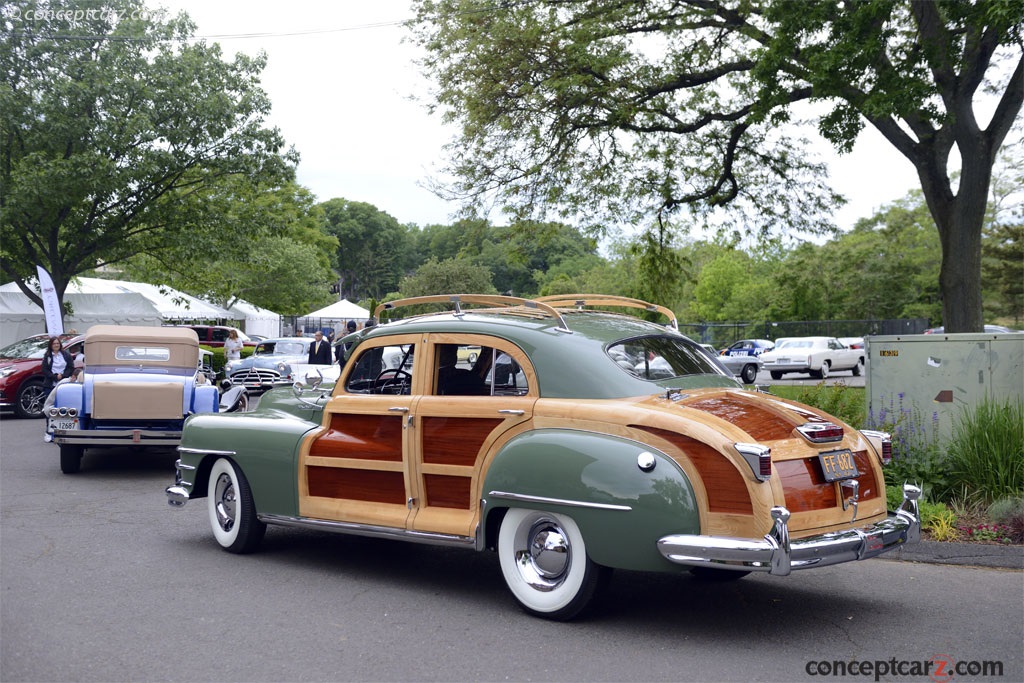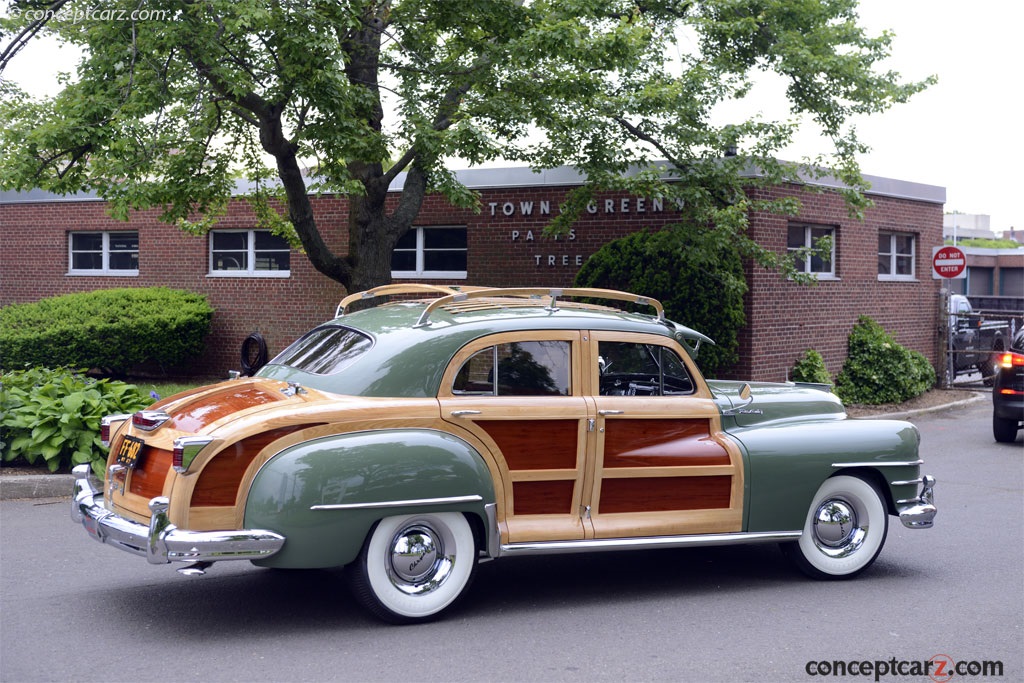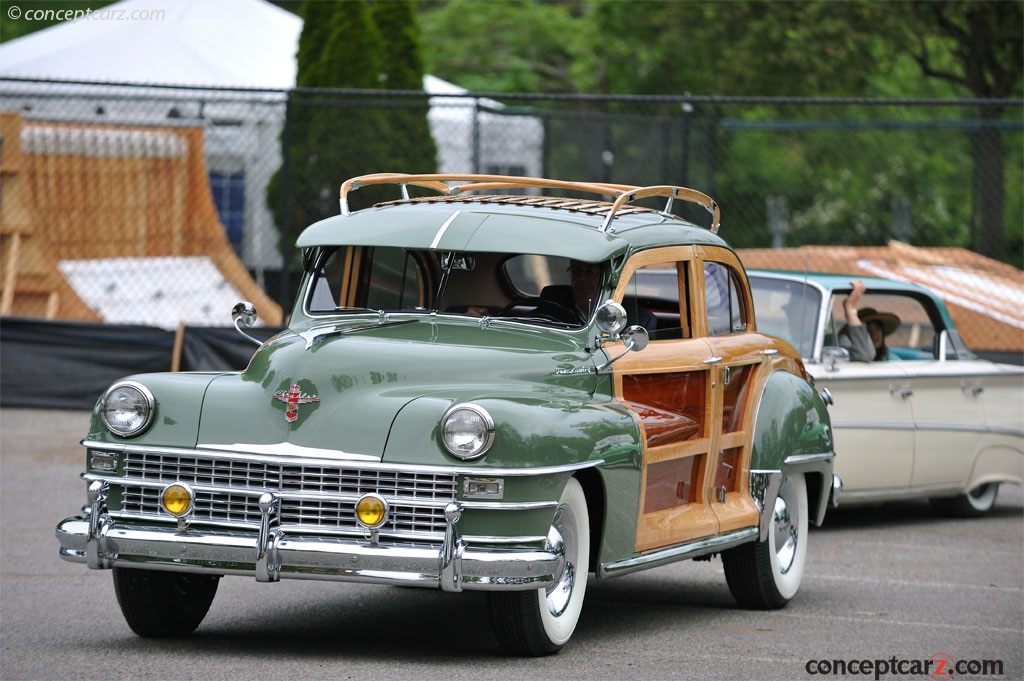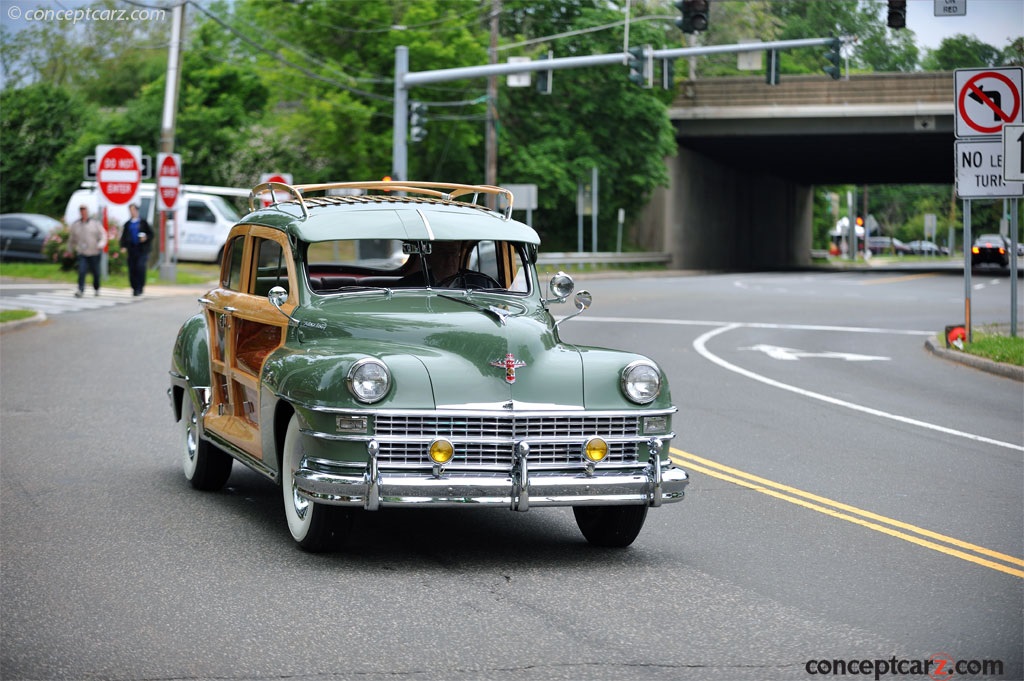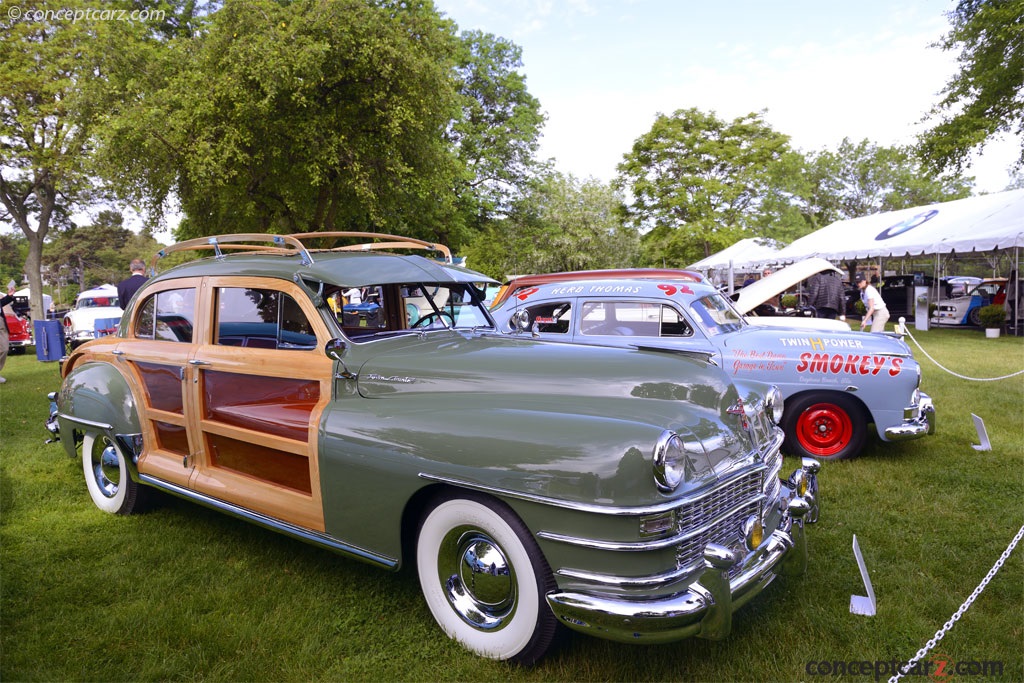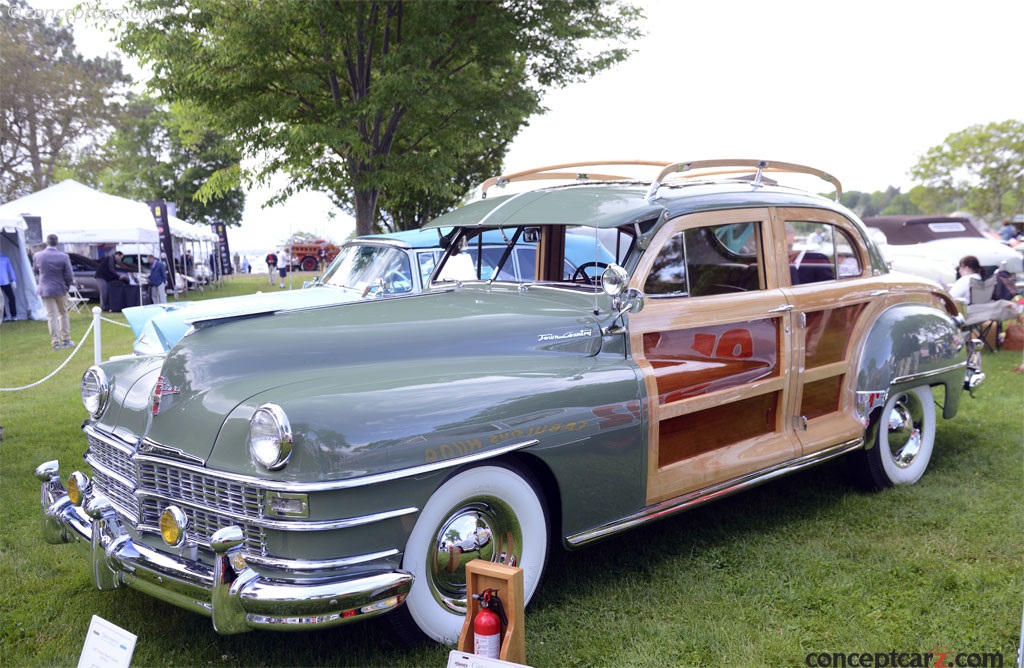In the immediate post-war era, returning GIs and the American public was eager to return to normal life. The Big Three automakers struggled to keep pace with demand, especially with a shortage of raw materials. Chrysler had a bit of a head start in the styling department, as Chrysler Corporation General Manager David Wallace had conceived the wood-bodied Town & Country in 1941 as an upscale production-based automobile that could attract wealthy buyers to Chrysler showrooms. It was neither sedan nor a station wagon but had a fastback profile with twin-hinged ‘barn doors’ at the rear. It was a sophisticated automobile that was elegant enough for the city and chauffeur driving, yet utilitarian for country living. The wood-bodied, barrel-back sedan was part of the six-cylinder Royal line and was the precursor to future wood-bodied Chrysler models.
The wagon body style was originally developed in the 1920s as an inexpensive way to transport people, luggage, and materials. Mr. Wallace envisioned these wood-bodied cars to mimic the basic lines of contemporary Chrysler steel-bodied sedans, yet with greater luxury, quality, refinement, and panache. They were constructed in a similar fashion to pre-war station wagons which were often utility vehicles cataloged in the manufacturers’ commercial lines. During the 1930s, the style was refined and developed a certain vogue as prestigious manufacturers such as Packard and Chrysler began adding them to their catalogs.
The Chrysler product was built using structural wood of white ash with contrasting panels of rich Honduran mahogany. The wooden body parts were supplied by Pekin Wood Products from Helena, Arkansas, that were then shipped to Chrysler’s Jefferson Avenue plant in Detroit for final fitment and assembly. The wooden framing was built from straight-grained ash, and then hand fit, as every compound curve and wood-to-metal interface had to be created by hand. The roof, however, remained solid steel.
Nearly 2,000 examples were built in 1941 and 1942. When production resumed in the post-war era, a range of five body styles was planned for 1946, the sedan-wagon was eliminated, and a brochure advertised two- and four-door sedans, a three-passenger roadster, and both hardtop and soft-top convertibles. However, only a conventional trunk-back sedan and an eight-cylinder convertible coupe ever made it into production. Most of the production sedans were Windsor sixes and the convertibles were New Yorker eights. A total of 100 long-wheelbase eight-cylinder sedans were built, with the remaining examples being six-cylinder cars on the shorter Windsor wheelbase. The convertible was built on the 127.5-inch wheelbase of the New Yorker and came with its engine, a five-main-bearing 135 brake horsepower straight-eight engine, Prestomatic Fluid Drive transmission, and an electric clock.
Although annual production totals were not recorded, a total of 8,368 New Yorker Town and Country convertibles were built. When the second-series 1949 line was introduced wearing a new design, it dropped the Town and Country sedan. In 1950, the model became an eight-cylinder hardtop coupe with painted metal insert panels. The ‘Town and Country’ name would be used by Chrysler for a long succession of steel-bodied station wagons and minivans.

